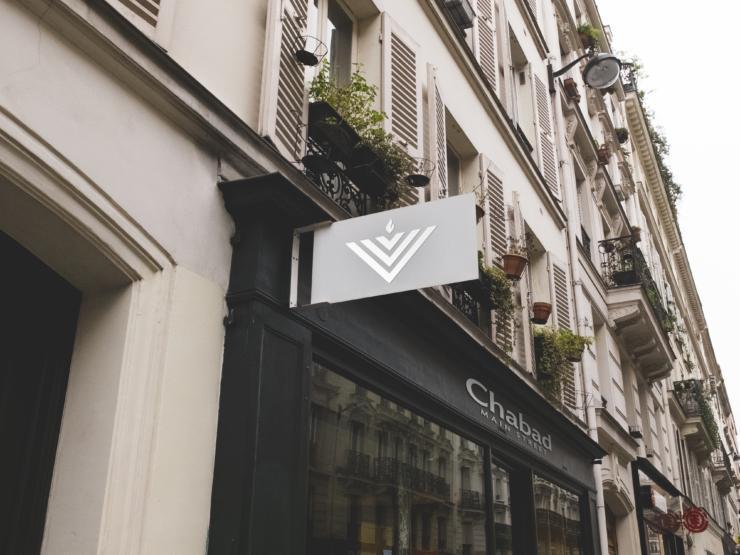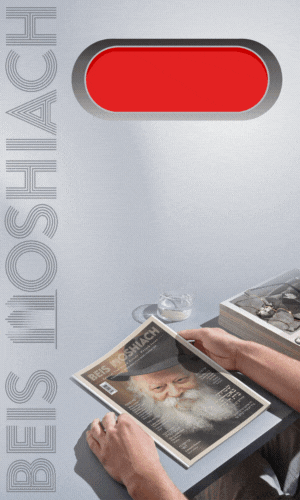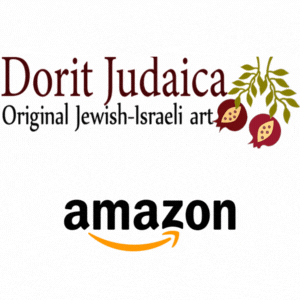Non-Frum Places Turn Chabad
Though at first reluctant, Mitchell Friedman realized the best chance of saving the synagogue he’d always considered to be “liberal Conservative” was turning it into a Chabad House • Full Story
Though at first reluctant, Mitchell Friedman realized the best chance of saving the synagogue he’d always considered to be “liberal Conservative” was turning it into a Chabad House.
For 88 years, the Howard Beach Judea Center occupied a sand-colored brick building on a quiet residential street in Queens just four miles (6.5 kilometers) from John F. Kennedy International Airport. Over time, membership dwindled and board members like Friedman began wondering how long the synagogue could remain open.
Meanwhile, a few blocks away, Rabbi Avrohom Richter and his wife Zeldi were in search of space. They’d opened a Chabad House in their home back in 2003, and while they once struggled to make a minyan, or 10-person prayer quorum, they now struggled to fit everyone inside for services.
Richter doesn’t remember who made the initial contact, but after several meetings with the board it was decided: the once Conservative synagogue would become Orthodox.
The story isn’t unique to Howard Beach. As Reform and Conservative synagogue memberships decline nationwide, some synagogue boards are reaching out to Orthodox congregations, primarily those affiliated with the Chabad movement.
In the past 20 years, more than one-third of Conservative synagogues and one out of five Reform synagogues closed, according to a 2020 Pew Research Center study. Also, while nearly 25 percent of American Jews consider Jewishness important, only one in five Jews attend synagogue monthly. Among the many reasons for this are membership dues — which can range from $1,500 to $5,000 annually — to the variety of ways people are now choosing to express their Jewish identity.
According to the same study, 38% of American Jews have engaged with Chabad programs in some fashion.
“There are all these denominations, but the bottom line is we’re all brothers and sisters. And we’re all children of the same God, the same Hashem,” Zeldi Richter said. “We’re all Jewish. Hashem accepts everyone. We need to be welcoming and embracing of all walks of life. We’re all connected on a deeper level.”
Yet, as productive as the first meetings were between the Howard Beach Judea Center and Richter, initially there were skeptics.
“We were coming from two very different perspectives and there were some people who were principally against things like a mechitza,” Richter said, referring to the partition separating men and women in virtually all Orthodox synagogues.
“Some people didn’t know much about the Chabad movement or what it meant to be Orthodox,” he said. “It was stuff they might have read about, or saw in a movie, and thought, ‘Oh these scary people.’ Then, as soon as they get to know you they see we’re not very different. We just follow the original tenets of Halacha [Jewish law].”
In fact, Friedman, who is now one of the synagogue’s most ardent champions, originally bristled at the proposal.
Raised in a mostly non-observant home, Friedman stopped attending services after his bar mitzvah at age 13. It wasn’t until his own son was ready to start Hebrew school that he and his family joined the then-Howard Beach Judea Center.
He was drawn to the synagogue precisely because it was not Orthodox.
“I was among those who opposed the partnership,” Friedman said. “The reason for my opposition had to do with my being comfortable in a synagogue where there was no separation of men and women. Anyway, I decided to give it a chance, and found that aside from the separation there was little difference in the service. I have since come to feel that the partnership was the way to go, and I continue my affiliation with Howard Beach Chabad.”
Since the partnership began, the number of people coming to the shul has slowly increased, Richter said. There are between 35 and 40 regulars for Shabbat services each week, and at least 100 on holidays, he said. A recent celebration for the Shavuot holiday, which involved ice cream, cheesecake and blintzes, drew nearly 100 people. And most importantly, there’s always a minyan.
Rabbi Yosef Lipsker of Reading, Pennsylvania, can relate.
Lipsker and his wife Chana first came to the city about 25 years ago to find a Jewish community of about 800 families. He was hired as the rabbi for the city’s only Orthodox synagogue, Shomrei Habrith. But by 2008, it had lost too many members to sustain itself financially. The founders, many of whom were Holocaust survivors, contemplated selling the building to a church.
Lipsker proposed buying the synagogue. Working together with the board and congregants he was able to lease the building with an option to buy it in 2010.
The rabbi, who spent time in Stamford, Connecticut, London and New Orleans before going to Reading has made it his mission to make the Chabad House a welcoming place.
“What’s happening is we’re looking under the hood and seeing what are the needs of the community,” Lipsker said.
Aside from hosting weekly Shabbat dinners, Torah classes and other programming, Lipsker also works with recovering addicts at the Caron Treatment Center, a non-profit rehabilitation center for people struggling with substance abuse.
“Rabbi Lipsker and his wife have done a remarkable job in getting people to show up for things,” said Jonathan Simon, who belonged to the synagogue before it became a Chabad House, adding that nearly 90 people came to celebrate Shavuot.
Back in Queens, Rabbi Eli Shifrin of Temple Torah, Chabad of Little Neck, spoke to The Times of Israel by phone about how his experience echoed that of the Howard Beach Chabad.
He was on his way to check the progress of much-needed renovations for the synagogue. Until the work is completed in 2023, the congregation is meeting in a space provided by the nearby Yeshiva Har Torah.
When Shifrin and his wife Rivky first came to Little Neck in 2005 they held services in their home. As their numbers grew, the numbers at Temple Torah waned.
“One Simchat Torah, the synagogue’s former cantor came and saw the place popping. Meanwhile, they were struggling to keep their doors open,” Shifrin said. “It was a body without a soul. The board realized the only way to survive is to go Orthodox.”
Many of the founders were Holocaust survivors. Although they’d become less observant, they were familiar with Orthodox practices, Shifrin said. That helped convince members who were hesitant about the idea.
“I saw myself as saving a Jewish structure, but some were worried about going Orthodox. I told them I am not here to swallow you but to lift you up,” he said.
It is that deepening sense of community and the push to get involved both inside and outside the synagogue that Howard Beach resident Friedman cherishes.
“What appeals to me now is that since the partnership with Chabad, there seems to be a stronger sense of community and family,” Friedman said.
“I would still describe myself as marginally observant, but I have to say that I enjoy my time in synagogue,” said Friedman. “I value that sense of community and family… and value the friendships I have made among my fellow congregants.”
325
Join ChabadInfo's News Roundup and alerts for the HOTTEST Chabad news and updates!











































Chabad is incredible! Thanks for sharing!
G R E A T !
continued SUCCESS!
בס”ד
This is like a balm to my soul.